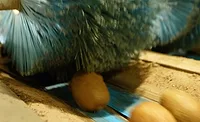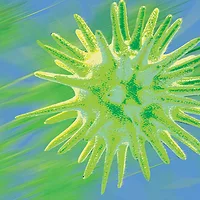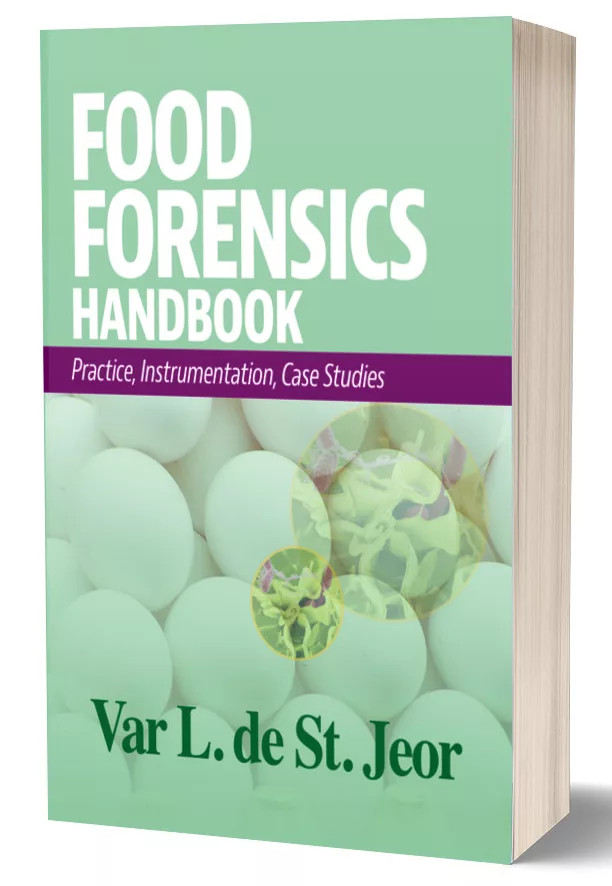Bioaerosols

Throughout written history, the most devastating pandemic illnesses (i.e., pneumonic plague, small pox, inhalation anthrax, tuberculosis, influenza and even chicken pox) were largely spread through the airborne route. These diseases were responsible for more deaths than any wars or other natural disasters. The ever-increasing urbanization and movement of people around the globe have made each pandemic ever more devastating. Efforts to ultimately control them were most instrumental in sparking the greatest advancements in the biological sciences, medicine, public health, engineering and even architecture.
On the obverse side of this science within the last century, the rise and development of bio- and nanotechnology along with analytical laboratories, as well as the pharmaceutical and medical device industries, the space program and semiconductor manufacturing, just to mention a few, have shifted contamination control technologies from people to things.
Airborne contamination and its control were, and continue to be, the greatest hurdles to make these industries both safe and profitable. The prevention of aerosol generation and the capture of inadvertently released viable and non-viable particles became the mantra for the development of cleanrooms, advances in asepsis and the control of indoor air pollutants. It created a unique niche of responsibility and demonstrated the professional skills of the biological safety officer, sanitarian, industrial hygienist and contamination control technician. Regardless of the approach, whether protecting people or things, it’s all about air.
The spate of food contamination events over these past few years gave me pause to wonder about the role of bioaerosols in cross contamination within our industry, both manufacturing and retail. The questions that remain unanswered are the following: Does the generation of droplets and droplet nuclei created during the various processing operations increasing the relative risk of cross contamination? And if it does, how much is that risk increased? After all, we deal primarily with wet processes in a less-than-sterile environment. By their very nature, dicing, chopping, pureeing, grinding, mixing, filling and washing all generate droplets and droplet nuclei. Our cleaning protocols call for spraying and scrubbing, particularly those used for clean-in-place equipment and terminal cleaning. This equals massive aerosol production. We are constantly using water under pressure for a variety of tasks. And yet, I have seen little written on the control of airborne contamination except in clean fill areas.
A Little Background
To put airborne contamination in proper perspective, consider the information in a 1987 article by Ake Bovallius and Roger Roffey, published in the Defense Science Journal. The authors cataloged the concentrations of viable microorganisms in the air of different occupational environments, ostensibly for the protection of workers. However, consider the protection of product when a poultry slaughter house may have as many as 2×104 bacteria/m3 air and a bakery can have up to 6×103 fungal spores in the same air volume. The air in swine houses and mushroom farms is yet another order of magnitude higher.
On the retail side, there is no mention of controlling the liberation and movement of airborne contaminants in the Food Code (canopy hoods over cooking equipment don’t count). Neither the FDA nor NSF addresses air sanitation and prevention of airborne spread of contaminants in their plan review courses. It is definitely not considered by most health departments as a potential source of cross contamination. All too often, we see a scrapping sink right next to a prep table in a newly constructed facility. It’s almost as if we purposely overlook the obvious.
While I’m not advocating we go overboard, I merely suggest that we seriously consider controlling the movement of air, coupled with the use of techniques and methodologies that minimize the generation of aerosols in our planning and operations. To put aerobiological contamination in proper perspective, here’s a bit of its history and lessons to be learned from biological safety.
Although the airborne release of microorganisms through droplets was first described in 1877, the science of aerobiology is relatively new. Aerobiology was born in the 1930s when the theory of atomization was described and modeled mathematically; droplet evaporation and distance of fall of droplets before evaporation were calculated and the effects of environmental influences on droplet behavior were cataloged. Airborne microbiological contamination could finally be described in detail and sampling methods developed. The science of ’Biological Safety’ was born a decade later when epidemiological data on laboratory-acquired infections showed a significant risk associated with certain organisms. Subsequent research on exotic diseases and improved diagnostic techniques prompted a paradigm shift from protecting the experiment to also protecting the experimenter. It was through this applied science that biological containment was developed. In 1976, Arnold G. Wedum, M.D., who is considered the father of biological safety, wrote: "It is true that good engineering design is not a completely adequate substitute for thoughtfully applied good technique, but the reverse also is true. Both are necessary." Detailed analysis of the conditions under which many of the laboratory infections were acquired showed that several strategies would have to be used to minimize risk. The basic principles of biological safety, with emphasis on both facilities and technique, have served laboratory workers well these past five decades. Our industry might also benefit from these lessons. To begin these lessons, consider the following strategies and think of applying them to our industry.
First, biological safety has one primary goal: to establish as complete control as necessary over the disease agents being investigated. Its focus concerns itself largely with the aerobiological pathway of microorganisms, their infectivity and microbial survival in the environment. The latter focuses on the launch, aerial transport and subsequent deposition of such particulate matter that represents a size distribution of 0.5 µm to 15.0 µm. These particles may be liquid or solid and contain microorganisms, organic and/or inorganic materials.
Secondly, while microbial particles are subject to the same physical laws as other airborne particles, they are unique. Microbial aerosols are subject to laws concerned with their special property of being living entities. That is, they are able to multiply in kind with the expenditure of energy and production of nucleic acid. Therefore, in the application of biological safety, airborne microbes are considered in terms of both their physical and biological attributes.
Biological Safety Measures
For its application, biological safety follows a strategy that has several components, each designed to provide temporal and spatial separation of the experiment and experimenter. Each acts upon the other to reduce risks and provides a safe work environment, as well as protection of the product or process. The rationale for biological safety is based on the principle that when the host range or contagious nature of the disease agent is not known, the precautions are stringent until definitive evidence on these factors has been obtained. It is less difficult to downgrade a safety program than to upgrade it.
All microbiological safety measures may be classified under one or more of the following six categories; each is ideally suited for the food industry. It actually starts with determining risk of aerosol generation and ends with biocontainment. It relies heavily on engineered alternatives, supplemented by good practices.
Avoid — Unnecessary exposure to contaminants and disease agents is avoided by restricting and controlling the movement of personnel and equipment into and out of potentially contaminated areas.
Protect — Individuals (or food products) may be protected from infectious disease agents by the use of personal protective clothing, devices—including barriers—and work practices. Confinement of processes in isolated rooms and the use of committed equipment may significantly protect food products from cross-infection along with the proper design of buildings and control of air, water and sewage flow.
Confine — When contaminated foods are handled only within enclosed areas, the spread of airborne contamination is controlled. Containment is a passive control system that ensures that infectious microorganisms remain in the area in which they are generated. Containment barriers are used within the facilities to separate the contaminated from clean areas by time and space through physical structures. In most installations where this strategy is used, a variety of overlapping integrated systems achieves a satisfactory level of biocontainment. To do this, three basic containment barriers are used:
Primary — This is the principal mechanical or structural barrier that isolates the infectious microorganism and prevents it from escaping into the environment; it is most closely related to equipment.
Secondary — This is facility design. These are barriers incorporated into a facility that prevent the escape of infectious microorganisms from one interior area to another. Such barriers include filtered ventilation systems, zones of differential air pressure and sealed internal and external penetrations for utilities and communications. Included in the secondary containment is the concept of zone designation which addresses the risk of the presence of infectious agents in the immediate environment. Zone designations are given to transition areas from high to low risk and are primarily maintained by air-pressure gradients and restriction of movement.
Tertiary — Tertiary containment goes beyond the building. It provides further temporal and spatial separation of the infectious microorganisms that, for example, may inadvertently escape from waste disposal and sewage. This level of containment also includes such practices as handwashing and, in some critical situations, taking a shower before starting work or going from contaminated to clean.
Dilute — It has often been said that "Dilution is the solution to pollution." Danger from contaminants may be reduced with volume air flow. Air movement, when used with frequent air exchanges and filtration, is part of dilution and is quite effective in contamination control. Additionally, air filtration is a form of confinement, particularly when high efficiency particulate air filters are used. Likewise, directional airflow is also used as a confinement strategy. Single-pass air from clean to contaminated areas will prevent the movement of droplet nuclei from their point of generation to the final product. Filtration and air directionality effectively augment dilution.
Decontaminate — Contaminated surfaces and materials may be decontaminated by a variety of physical and chemical means. The methods used for decontamination should be specific for the target infectious organism. Consider practicing Integrated Cleaning and Measurement, a way of assessing the use of the right product for the application. This means integrating the chemicals, tools and other factors in the cleaning arsenal to the surfaces to be cleaned, to the soiling to be removed and to the techniques used by the cleaning staff before measuring outcomes. Assessing the effectiveness of the application to the outcome is an excellent way to determine its cost-effectiveness. We now have relatively inexpensive and user-friendly ATP-monitoring technologies that provide us with real-time comparisons and can guide us in our cleaning and decontamination efforts.
Communicate — When all applicable containment and control measures are outlined and communicated to all personnel involved, a workable contamination control program will result. Every employee should clearly understand what they may and may not do in their regular course of work, and what to do when inadvertent incidents occur.
All this stuff is fairly heady. And, I’m the first to concede that engineered alternatives may not be a factor in our operations or even necessary until the regulations catch up with the science. However, bioaerosols are a risk factor in food safety and should not be overlooked. Having said this, there are several preventive measures that are pertinent to the food environment and should be considered by both operators and regulators alike. These factors were listed in a 2004 article that appeared in the Journal of Food Science. Parenthetically, they make a lot of sense.
Doors — Keep them closed as much as possible. This will help maintain air balance and prevent fluctuations in temperature and humidity—both factors in microbial survival. Closed doors also control employee traffic.
Traffic — People transport microbes. The greater the traffic, the higher the level of contamination. Restricting movement will help to reduce risk of cross contamination by bioaerosols.
Ventilation — Keep all mechanical systems well maintained and in good operating condition. As mentioned above, air movement and directionality, pressure gradients, dilution and filtration are integral to reducing bioaerosol movement.
Ambient temperature and humidity — Keeping a production area cool and dry will reduce the number of viable droplet nuclei in the air. It also serves to minimize any influence from the outdoor environment in critical areas.
Processes — Keep a critical eye on all processes for the generation of aerosols. Try different ways to minimize contamination from droplets and droplet nuclei releases by adjusting times, interposing barriers or altering the way foods are handled. We are limited only by our imagination and creativity.
Forensic sanitarian Robert W. Powitz, Ph.D., MPH, RS, CFSP, is principal consultant and technical director of Old Saybrook, CT-based R.W. Powitz & Associates. Contact him directly at Powitz@sanitarian.com or through his website at www.sanitarian.com.
Looking for quick answers on food safety topics?
Try Ask FSM, our new smart AI search tool.
Ask FSM →







